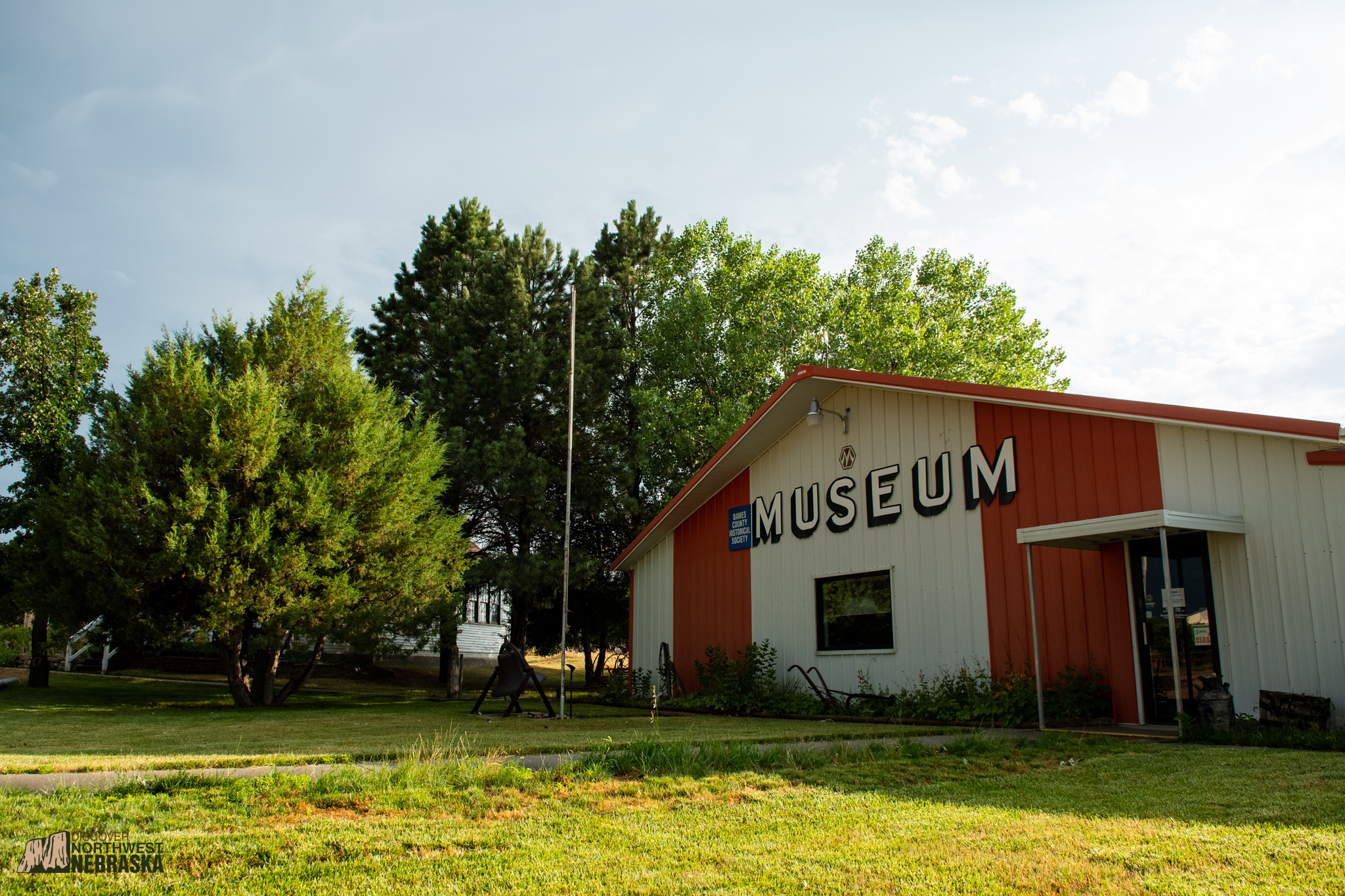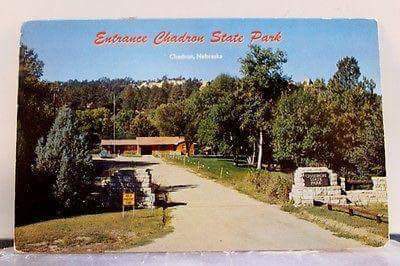By Kerri Rempp, Discover Northwest Nebraska Director
The Dawes County Historical Museum may be filled with antique artifacts, but the volunteers who run the museum are dedicated to bringing new exhibits to facility, and to finding new ways to display the artifacts entrusted to their care.
New to the museum this year are 18 “teaser exhibits” in the lobby, said curator Phyllis Carlson.
“They are mini-snippets of what you can see elsewhere in the museum,” she explained. Each building on the campus of the Dawes County Historical Museum south of Chadron is represented in the teaser exhibits, from photography and music to apparel and kitchenware.

On display for the first time is a collection of lightbulbs, including a nightlight and a bulb shaped like a rosebud. In the kitchen snapshot is a full bottle of olive oil. Atlases provide a look at old maps, and a nod to potato digging can also be found.
The teaser exhibits are housed along the west wall of the lobby, taking the place of the many books that once filled the shelves. The books have been relocated throughout the museum, adding depth to the facility’s other displays as train books now reside with the railroad exhibit and cookbooks with the kitchen display. Research volumes – more than 210,000 documents – are now together in one room, making them easier to access, and museum staff is working to create a card catalog for all of the documents and books.
With the teaser exhibits completed, the museum is turning its attention to the construction of a new building to house two new collections. Ground work for the construction is complete, and the goal is to have the building finished by the end of the year. The new building will be home to a doll collection donated by Richard and Clara Erixon and to Carl and Fawn Larsen’s collection of telephone company history.
Clara Erixson began her doll collection in the 1960s, and when the exhibit opens at the Dawes County Historical Museum roughly 3,000 dolls will be moved in to the new building, including antiques dating back to 1890. Erixson’s hobby eventually became a business when the couple opened Clara’s Attic on East Avon Street in Lincoln, restoring dolls, designing and sewing costumes for them and making her own dolls. The couple moved to Crawford in 1999.
Carl and Fawn Larsen moved to Chadron in 1966, and Carl, also a former Chadron mayor, worked for the telephone company for more than 50 years, collecting old phones, insulators, portraits, advertising signs, phone books and even an outdoor telephone booth along the way.
The museum is home to a pioneer schoolhouse and church and thousands of other items. Volunteers, of course, have their favorites.
“One of the things I get a kick out of is the surgical things,” Carlson said. She was 13 when she had her tonsils removed and remembers sitting in a surgical chair similar to the one they have on display as they deadened her throat and removed them. Showing that chair, as well as the gurney, incubator and other medical instruments to children always draws awed reactions, she said.
The Chadron-Chicago Horse Race exhibit is another favorite exhibit. On June 13, 1893, horseback riders set out from the Blaine Hotel in Chadron to traverse 1,000 miles to Chicago. The idea for the race began as a hoax, but soon turned to reality and Buffalo Bill Cody offered to sweeten the prize winnings for the first rider to arrive at the World’s Fair. The revolver won by Joe Gillespie, who won the race after two other riders were disqualified, is on display at the museum.
Assistant curator Linda Rotness is fascinated with the Marcus Cain exhibit. Housed in a building of its own, the collection features several unique pieces of farm equipment created by Dawes County farmer Marcus Cain.
“It’s so neat. You won’t find that anywhere else,” Rotness said.
Cain is believed to have developed one of the first self-propelled combines in existence in the 1930s, and other pieces of equipment on display include a 24-foot roto-tiller/grain drill/soil packer with three motors, a single-engine stubble chopper, customized grain trucks and a World War II tank retriever crawler tractor.
Visitors to the museum find their own favorites among the exhibits, but the common theme is amazement at just how many items the museum houses.
“They’re usually surprised at what we have,” Rotness said.
“They (also) appreciate that they can get close to the items,” Carlson added. “Everything is not behind glass.”
The Heesacker toy collection appeals to both children and adults, with toys of all decades on display.
“It’s like walking through your own memory,” Carlson said.
The variety of exhibits all but guarantees everyone will find something to interest them – whether it’s the agricultural equipment of Marcus Cain and the fashion and textile items on display to musical instruments or a collection of thousands of pens.
The museum was originally located in Chadron at 255 Mears St., but outgrew that location. A donation of land to the historical society made it possible for the museum to relocate to its present site in 1982, where it has continued to grow.
“There’s just all sorts of history here,” Carlson said.
The Dawes County Historical Museum draws 2,000-2,500 visitors annually, some of whom have long-ago connections to the region, and others, including visitors from overseas, who have no ties to the area. A relative of one of Chadron’s most prominent pioneer women, Fannie O’Linn, was so impressed with the museum they purchased a floor tile, Carlson said. The museum sells engraved floor tiles as a fundraiser, a tradition that has continued since the museum opened.
The museum’s other major fundraiser is the monthly publication of the Golden Age Courier. The free tabloid, first published in 1987, is filled with historical items of note, stories from local contributors and a few fun facts.
Many of the museum volunteers have been donating their time to the historical society’s efforts for years. Carlson and Rotness have worked with the museum for nearly a decade, with Carlson taking over as curator in 2013. While they upload obituaries to the computer, write the museum’s newsletter and maintain the society’s membership, the volunteers find camaraderie with each other.
“The first thing you’re going to hear is laughter,” Carlson said.
And with thousands of artifacts, there’s always something new to discover.
“No matter how long we work here, and it usually happens when we’re showing someone around, we notice something different,” Carlson said.
The museum hosts an annual Garden Party each August and History in Action Day on the last Sunday of September each year, giving guests more opportunities to view exhibits up close. The status for both of the 2020 events is yet to be determined due to the COVID-19 pandemic. The Dawes County Historical Museum is typically open from Memorial Day through the last Sunday of September, or by appointment. Due to the COVID-19 pandemic, the museum is currently open only by appointment. Call 308-432-4999 or email dchsdirector@gmail.com. Masks and the use of hand sanitizer will be required during your visit.








